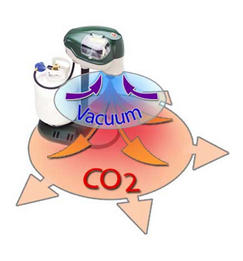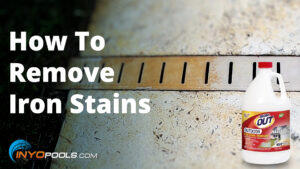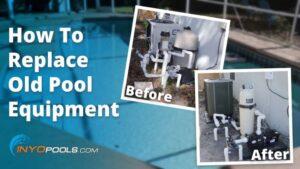Most of the pool owners I’ve met are certified animal lovers. Their pool recreation time would not be the same without their furry friend by their side. But that love does not extend to the creepy crawlies or varmints that live in your backyard. Among these critters I count mosquitos, water bugs, frogs, raccoons and birds. In this blog we will identify ways to contain and snuff out pest issues common among pool owners.
Water Bugs
When water bugs are seen in a pool, the first thing that pops up in my mind is “Eeeeek!” Water Bugs are a pest but their presence is a sign of deeper issues within the pool’s  water chemistry. Algae is a major food source for water bugs and other similar species. If there are high concentrations of these castaways floating in a pool then its water chemistry is approaching unsanitary levels.
water chemistry. Algae is a major food source for water bugs and other similar species. If there are high concentrations of these castaways floating in a pool then its water chemistry is approaching unsanitary levels.
The most efficient means in eliminating these pests is to cut off the food source; or in simpler terms clean your pool. Algae is a symptom of lax pool maintenance; most commonly a lack of sanitizing chemical whether it be chlorine, bromine or other. If you want a good guide on how to kill algae follow our How To on on the topic. For the reader on the go, in short the steps are to shock the pool water, add algaecide, heavy filtering and backwash (and repeat if necessary).
Mosquitoes
The mother of all annoying insects, the mosquito has been ruining summertime fun for millennia. The mere mention of these bitey bugs makes me swat at imaginary  tingles on my arm. Mosquitoes are a little different than the rest of pests on this list; instead of using the water as a food they use it as a breeding ground. If your reaction was “ugh”, you would be correct. Mosquitoes use puddles or pools of stagnant water to lay their eggs; these eggs grow into squirming larvae then eventually big nasty biting mosquitoes.
tingles on my arm. Mosquitoes are a little different than the rest of pests on this list; instead of using the water as a food they use it as a breeding ground. If your reaction was “ugh”, you would be correct. Mosquitoes use puddles or pools of stagnant water to lay their eggs; these eggs grow into squirming larvae then eventually big nasty biting mosquitoes.
How do you prevent them? Again the key to prevention is keeping a healthy pool. Most sanitation products like chlorine will not kill your nemesis the mosquito but it will inhibit larvae growth. While their growth is stunted, your pool’s filtration system should scoop them out of your pool and eventually backwash them to the gutter.  Mosquitoes love standing water so the churning of your water should keep them at bay.
Mosquitoes love standing water so the churning of your water should keep them at bay.
Ok what if my pump is down and I can’t filter my water? There are a few routes to be taken to stop the encroaching swarm, for a example a donut. No, not a real donut but one of these Mosquito Dunks. These are meant for standing water (ponds, unused pools) which is ideal for a pool with an out of commission pump. This dunk releases a pet-safe non toxic larvicide that kills mosquito eggs for up to 30 days.
Mosquito Magnets
For the active pool the Mosquito Dunk is not the answer because the active ingredients will be negated by your sanitation and filtering system. Mosquito Magnets are a great addition to a pool with  a large patio area. These interesting contraptions use a plume of Carbon Dioxide (CO2) and mosquito attractant scents to pull in the mosquitoes which are then sucked up by the vacuum. Maybe not so much of a mosquito magnet as a Mosquito Dirt Devil but this can work wonders.
a large patio area. These interesting contraptions use a plume of Carbon Dioxide (CO2) and mosquito attractant scents to pull in the mosquitoes which are then sucked up by the vacuum. Maybe not so much of a mosquito magnet as a Mosquito Dirt Devil but this can work wonders.
The Mosquito Magnet burns propane to create CO2 then releases safe amounts of the byproduct with mosquito attracting scent. Because the mechanism works on scent, it is recommended to place the magnet upwind of the protected area to maximize the drawing capability.
Birds
For homeowners a gaggle of birds can be an annoyance and a sanitation issue. Birds will “do their business” on your patio furniture, on your deck and in your pool. That is not only unsightly it is also unsanitary for the little ones. Insects and birds may both be pests but they must be dealt with in different manners.
For my fine feathered friends, the answer is less direct (no pesticides) and will rely mainly on confusion or scare tactics. Luckily, birds are literally bird brained so neither one of those goals is that hard. We are choosing these methods because firstly, it is the humane way to do things; and secondly we don’t want to pick up dead birds all summer. The options for averting avian invasions are scarecrows, bird tape, sprinkler systems, and decoys.
Scarecrows
Scarecrows are the most low-tech of the options and can be easily put together with some spare clothes and stuffing of your choice. I would try to avoid hay as it can create havoc for your skimmers and filters if it gets loose. Also, once the ruse of a fake person is figured out, it is likely to be more of a resting spot than a deterrent.
Sprinkler Motion Detectors
The most hi-tech deterrent on our list is essentially a mini motion activated water cannon turret run off of your sprinkler system. The sprinkler has a target radius of 45 feet which should cover most backyard and pool areas. Any suspicious motion within its radius is met is a spurt of water meant to annoy but not harm the offending fowl.
For such a sophisticated system the installation is simple:
- Tap sprinkler post into ground.
- Connect spout to hose
- Flip the on switch
- Enjoy the show
For any tech geek like me, it is a cool conversation piece as well as an efficient bird remover. Another fun plus to this option is that kids and dogs love to play with it.
Decoys
When a bird is surveying a neighborhood’s yards for a quick snack, one way to get your house put firmly in the “no” column is to install a predator decoy on your patio. A predator decoy can be a life-size hawk or owl model posted on a branch or a fake alligator floating in your pool. Birds rather avoid becoming someone else’s lunch when they’re looking for their own. Look at it this way, if you walked into a restaurant and saw a lion licking his lips at the first table you’d likely do a quick heel-toe spin right out of there.
Frogs
Do your neighborhood’s amphibians confuse your pool for a lily pond? Chances are you have found one or two frogs back-stroking in your pool, and there is even a chance you have found a dead one as well.
Saltwater
Fill a 5 gallon bucket with saltwater. I would suggest at least a quart or so of salt dissolved in the solution to make it useable for the job. Once the salt is dissolved, pour it on the deck surround your pool and let it let it dry. The result will leave a barely noticeable (to humans) layer of salt to the pool deck. This layer of salt is nothing to humans but it is an irritant to the pads of frogs and makes them think twice about sticking around too long. Though it is an irritant it will not harm the frogs.
Barriers
A more permanent option is to create a barrier surrounding the pool area of at least 20 inches high to prevent most frogs accessing the pool. This barrier can be an ornamental wall or flower pots, anything that can create a straight up and down barrier.
Raccoons and Possums
Besides the usual solution of trapping and relocation, most solutions involve making them think a bigger, badder animal is already calling your pool its home. For example, pool owners in the south have been using Gator floats for decades to scare away these little varmints. Alligators are the alpha predators of any ecosystem they are native to and all other animals avoid them.
Another precaution to prevent attracting these scavengers is making sure your pool deck is clear of trash or food. Once a raccoon sees your house as a food opportunity, your yard will stay on its “to-do” list for awhile.
Hopefully these tips gave you a head-start on pest control around your pool. If you have any questions or suggestions of your own, feel free to post in our comments section.













Leave a Reply